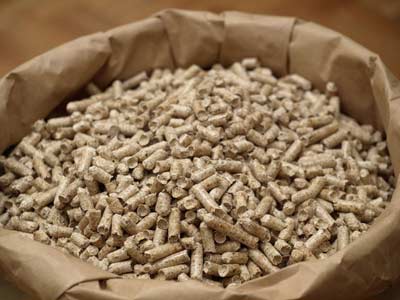A need for clarification
Solid biofuels can include wood pellets, wood briquettes, wood chips, non-woody pellets and, recently, new biocommodities such as thermally treated and densified biomass fuels, etc., which are entering the international market.

At present, there are a number of different testing methods available to attest to the quality of solid biofuels, and various practices to characterize the products. For a supplier trading internationally, this can mean multiple tests or results that cannot be compared.
To answer the need for clarification at an international level, ISO is working on a series of International Standards on solid biofuel specifications and classes. This will provide concise and unambiguous criteria and methods for the characterization of solid biofuels.
Eija Alakangas, project leader of this series of standards, explains to us how important they are for the market.
What will be the benefits of using the standards?
During 2013 an estimated 24 million tonnes of pellets were consumed, of which about 30 % to 35 % were traded in bulk internationally. We have had solid biofuel standards in Europe and in the USA, in particular for wood pellets, briquettes and wood chips. Also, several test methods have been used. If you trade your solid biofuels internationally, you have to complete a number of tests to prove the quality of your fuels and, as things stand today, you cannot compare results because they have been derived using different methods. Now, by using international fuel specification and classes standards (ISO 17225 series), sampling and testing methods, the same quality classification and testing results can be applied worldwide.

Project leader of ISO 17225 series
Who are these standards for?
The standards are intended for all stakeholders working in the solid biofuels supply chain, including fuel producers, traders, end users, authorities and policy makers. These standards will serve as a tool to enable efficient trading of solid biofuels and foster a better understanding between seller and buyer, as well as for communicating with equipment manufacturers.
What were the main challenges you encountered when developing these standards?
The main challenge for biomass fuels is that they are not homogeneous. The properties of biomass differ depending on the raw material. There are also different national interests and practices behind the production of solid biofuels. The ISO 17225 series determines specifications and classes based on the origin and source of the solid biofuel raw materials: woody, herbaceous, fruit, aquatic biomass and blends and mixtures. Then, for each traded form like pellets, quality properties were selected separately but origin and source and moisture and ash content were specified for all traded forms.
The ISO 17225 series
With the ISO 17225 series, ISO is preparing almost 60 International Standards for solid biofuels on graded wood pellets, graded wood briquettes, graded wood chips, graded non-woody pellets, thermally treated and densified biomass fuels, etc. It comprises definition and classification standards as well as standards for chemical and mechanical testing. A standard on sampling methodology is also included as a necessary building block for accommodating certification and various schemes of credit accounting.
Facts and figures:
Evolution of the global energy market to 2035 according to new policies scenario
- Global energy demand will increases by one-third from 2011 to 2035.
- The share of fossil fuels in the world's energy will fall from 82 % to 76 % by 2035 and low-carbon energy sources will meet around 40 % of the growth in primary energy demand.
- The Middle East will be the second-largest gas consumer by 2020 and third-largest oil consumer by 2030.
- The share of renewables in total power generation will rise from 20 % in 2011 to 31 % in 2035, as they supply nearly half of the growth in global electricity generation.
- Biofuels use triples, rising from 1.3 million barrels of oil equivalent per day (mboe/d) in 2011 to 4.1 mboe/d in 2035, by which time it will represent 8 % of the demand for road transport fuel.
Source IEA

